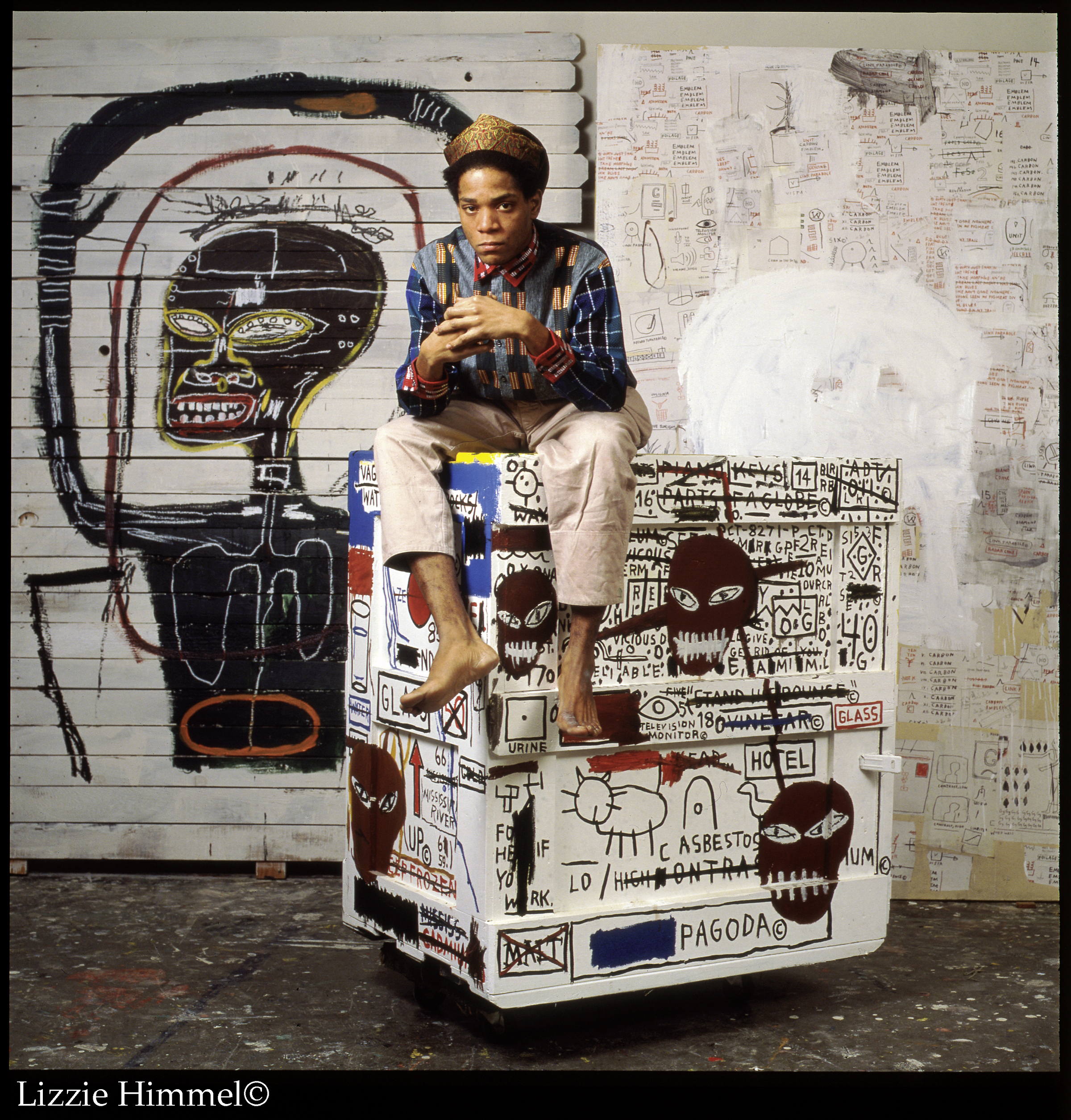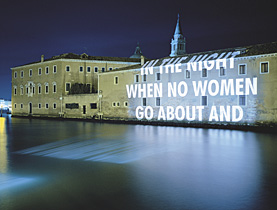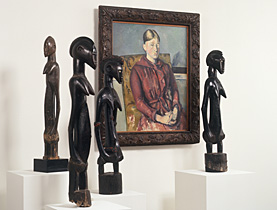Basquiat’s flame burns bright at the Beyeler

Charismatic American artist Jean-Michel Basquiat was full of energy and curiosity - and had an explosive artistic talent.
The Beyeler Foundation near Basel is currently hosting the largest ever European retrospective of Basquiat’s works to mark what would have been the influential artist’s 50th birthday.
Basquiat died from a drug overdose in 1988 aged just 27, having created around 3,000 works in eight years.
During his brief career the artist had strong ties to Switzerland, having been championed by Zurich art dealer Bruno Bischofberger and the Beyeler’s founder, Ernst Beyeler.
“As one of the greatest artists, it’s incredible that there has never been a major show about Basquiat in Europe,” curator Dieter Buchhart told swissinfo.ch at the media presentation ahead of the opening on May 9.
The exhibition features more than 100 paintings, drawings and objects in Basquiat’s distinctive bold and bright style. Many have come from private collections.
Vibrant time
Born in Brooklyn, Basquiat was the son of a Haitian immigrant and his wife of Puerto Rican origin.
He started his career in the New York underground graffiti and music scene, meeting – among others – a young Madonna, with whom he had a brief relationship.
It was a vibrant time, says Fab 5 Freddy, a hip hop pioneer and former graffiti artist, who flew over specially for the launch of the show.
“We were just good buddies, co-conspirators in trying to make it happen,” he told swissinfo.ch.
“We were the only two black guys that were just making moves in contemporary modern art, in pop culture, in the downtown New York scene.”
Fab 5 Freddy remembers fondly how he and Basquiat used to go on “museum days” where they would take sketch books and pretend to be art students.
“We’d basically laugh a lot and that’s what I remember a great deal, a lot of laughing,” he said.
Energy and curiosity
Basquiat’s breakthrough came in 1981 when he participated in an exhibition in New York. By early 1982 his works had attracted the attention of Bischofberger.
“He was an absolutely lively young person bursting with energy, with a beautiful appearance, very strong, like a strong animal, with a great-looking face and his Rasta hairdo,” the now 70-year-old Bischofberger recalled.
“He was highly interested in everything which happened, he was one of the most curious people I have ever met.”
Multitalented – but with no formal artistic training – Basquiat’s art was populated by comic-like skeletal figures, everyday objects and poetic slogans.
He blended elements from pop culture with political and economic themes to produce commentaries on issues such as the consumer society and racism. Among those depicted in his works are famous African-American boxers such as Mohammed Ali (Cassius Clay, 1982).
As can be seen in the exhibition, the effect was colourful and powerful. Before long the artist was a star, becoming the first black artist to enjoy international success.
Childlike but monumental
“His was a kind of primitive, almost childlike but monumental way of presenting [his art]. This style of canvas was fascinating for almost everybody who saw it,” Bischofberger told swissinfo.ch.
People were attracted by seeing in a large format a reminder of what they might have scribbled or drawn as a young child, he added.
“It was similar way of approaching things, showing the most essential and all kinds of influences from around him.”
Basquiat visited Switzerland 14 times. Ernst Beyeler brought the-then 22-year-old to Basel and showed his work in his gallery in 1983, including the paintings Philistines and Self-Portrait (both 1982), which are both on display at the exhibition.
The artist also visited Bischofberger’s studio, producing works with Swiss motifs such as mountains. At one stage, he even helped the art dealer’s young daughter with one of her paintings, which Bischofberger finally gave to her a few months ago for her 30th birthday.
Collaboration of a rather grander sort took place after Bischofberger introduced Basquiat to pop artist Andy Warhol. The two became close friends, producing around 100 works together.
However, Basquiat abruptly ended the collaboration after a joint show was panned by the critics in 1985.
Death and legacy
Life was not always easy for Basquiat. He was very sensitive and often lonely. He was also addicted to heroin.
His final artistic phase showed a preoccupation with death, as seen in Riding with Death from 1988, foreshadowing Basquiat’s own drug-related demise in the same year.
“Basquiat was extremely influential, he was one of the first artists after the conceptual movement who actually did something conceptual in a very aesthetic way,” Buchhart said.
He was also a predecessor of the knowledge society in which we now live and of the internet generation which takes things “here and there” and combines them to create something new, the curator added.
And of course the Basquiat myth – fuelled both by his art and enigmatic personality – lives on. It is perhaps best summed up by a quote from his old friend, Fab 5 Freddy.
“Jean-Michel lived like a flame. He burned really bright. Then the fire went out. But the embers are still hot.”
Isobel Leybold-Johnson in Riehen, swissinfo.ch
Basquiat runs from May 9 to September 5, 2010 at the Beyeler Foundation in Riehen, near Basel.
It presents five phases: the early years before his fame, 1981-1982, gallery work and use of more words and symbols, the Warhol collaboration, works leading up to his death.
Renowned museums, galleries and private collections have loaned works, including the Museum of Modern Art, New York, the Estate of Jean-Michel Basquiat, New York, and Bruno Bischofberger in Zurich. John McEnroe is among the celebrities to have contributed.
The exhibition was conceived in collaboration with the Musée d’art moderne de la Ville de Paris, where it will be one view from October 15, 2010 to January 30, 2011.
The best known film is Basquiat by Julian Schnabel, featuring Jeffrey Wright as Basquiat and Dennis Hopper as Bruno Bischofberger.
However, participants at the media conference for the Beyeler show agreed that although it was helpful in introducing Basquiat to a wider audience, it was not always close to the true story. They said it was more about the director – also an artist – than about Basquiat.
Radiant Child is a new documentary about Basquiat, made by Tamra Davis, one of his friends. It was shown at the 2010 Sundance Film Festival.
Downtown 81, not premiered until 2001 but made in 1980-1, seeks to capture of mood of 1980s underground New York and stars Basquiat, Debbie Harry and Fab 5 Freddy.

In compliance with the JTI standards
More: SWI swissinfo.ch certified by the Journalism Trust Initiative













You can find an overview of ongoing debates with our journalists here . Please join us!
If you want to start a conversation about a topic raised in this article or want to report factual errors, email us at english@swissinfo.ch.